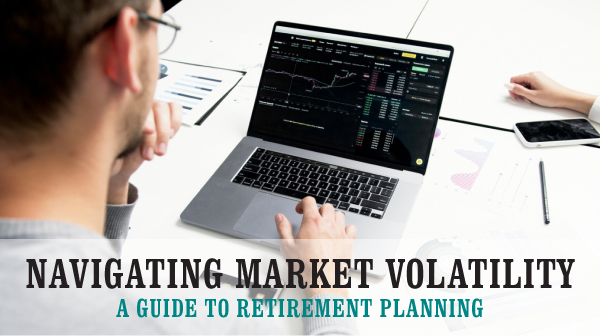
When in uncertain times, people often wonder if they should get out of the stock market to prevent losses. While it’s true you can’t lose money if you aren’t in the market, you can’t benefit when the market goes up. If you look at the S&P 500, one of the most widely recognized benchmarks of the stock market, it was up 24% in 2023. The rise has continued into 2024; as of mid-September it’s up another 19%.
Contrast 2023’s returns to those of 2022, which saw the S&P benchmark down 18%. One of the key takeaways here is that if you got out in 2022 to avoid the continuation of the downturn into 2023, you missed out on the recovery. We don’t have to go back far—only to the beginning of the pandemic, when the market saw a single-day crash of 10.87%. In the months following, not only did the market fully recover, but it continued to rise significantly.
The moral of the story is that when people get out during a crash or a downturn, they usually sit back and watch the market recover while they aren’t in the game. If you got out at the low point in 2020 and didn’t get back in, then you missed out on the 146% rise that has occurred since then.
While the past isn’t a guarantee of what will happen in the future, the reality is that, in the long term, the market generally outpaces most other assets. Of course, if you plan to retire in the next year or two, the worst thing that can happen is you plan to start drawing on your retirement funds and the very next day the market crashes. We all know or can imagine how gut-wrenching that could be, so what’s the alternative? For each person it is important to weigh whether their risk tolerance is such that a loss would be more painful to you than missing out on a gain, or vice versa. This is an area in which a financial advisor can help you out significantly.
Another thing to keep in mind is that we don’t have to think in absolutes. What if you can have the best of both worlds? For many, an allocation like this can be a great option. Instead of deciding to take all of your money out of the market, you can determine how much money you need for the next 3 to 5 years and make sure those funds are safe. You could then let the rest of your money stay exposed to the market, where it may have a better chance to grow significantly. This allows you an opportunity to capitalize if the market goes up, or let the invested money stay invested if the market goes down and wait for it to come back up.
Here is an example: Let’s imagine you have a retirement account of $1 million. You might decide to move it into a CD, allowing you to earn interest without a risk of loss. Over the last 10 years, interest rates on CDs were as low as .15% and as high as 5%. If inflation is at 3% you may be losing money. Instead, you decide you need $40,000 per year for retirement and put $200,000 in a safe place, covering your expenses for the next 5 years. If the market goes up 10% the next year, your $800,000 invested just earned you $80,000 or two years of additional income needs. You could cash that out, or some amount less than that, to add another year or two to the short-term fund. What if the market went down by 20%, the following year instead of up 10%? You would have lost (on paper) $160,000, but you don’t need that money for another 4 years, so you can just ignore the downturn and wait for the market to go back up.
A Morningstar study of a 20-year investment in the S&P 500 left alone versus getting in and out of the market shows the following: If you put $100,000 in the S&P 500 at the beginning of 2001, 20 years later it would have matured to $424,760. If you took your money out and missed a number of the best days while on the sideline, you might find the results to be surprising. If you missed only five of the best days, your total gain leaves you with $268,277. Miss the 15 best days? You only have $147,052. If you missed just the 25 best days over a 20-year period, you will finish with less than the $100,000 you started with. This is why it’s important to plan for long-term as well as short-term investing objectives.
(Disclaimer: This article is for informational purposes only and is not tax, legal or financial advice. Everyone’s situation is different, so consult a financial advisor.)
___
Photo, top, courtesy of Artem Podrez / Pexels













